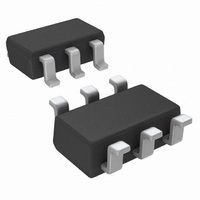ADC081S021CIMF/NOPB National Semiconductor, ADC081S021CIMF/NOPB Datasheet - Page 8

ADC081S021CIMF/NOPB
Manufacturer Part Number
ADC081S021CIMF/NOPB
Description
ADC 8BIT 1CH 50-200KSPS SOT23-6
Manufacturer
National Semiconductor
Series
PowerWise®r
Datasheet
1.ADC081S021CIMFNOPB.pdf
(18 pages)
Specifications of ADC081S021CIMF/NOPB
Number Of Bits
8
Sampling Rate (per Second)
200k
Data Interface
DSP, MICROWIRE™, QSPI™, Serial, SPI™
Number Of Converters
1
Power Dissipation (max)
11.6mW
Voltage Supply Source
Single Supply
Operating Temperature
-40°C ~ 85°C
Mounting Type
Surface Mount
Package / Case
SOT-23-6
For Use With
ADC081S021EVAL - BOARD EVALUATION FOR ADC081S021
Lead Free Status / RoHS Status
Lead free / RoHS Compliant
Other names
ADC081S021CIMF
ADC081S021CIMFTR
ADC081S021CIMFTR
Available stocks
Company
Part Number
Manufacturer
Quantity
Price
Part Number:
ADC081S021CIMF/NOPB
Manufacturer:
NS/国半
Quantity:
20 000
www.national.com
Specification Definitions
ACQUISITION TIME is the time required to acquire the input
voltage. That is, it is time required for the hold capacitor to
charge up to the input voltage. Acquisition time is measured
backwards from the falling edge of CS when the signal is
sampled and the part moves from track to hold. The start of
the time interval that contains T
SCLK of the previous conversion when the part moves from
hold to track. The user must ensure that the time between the
13th rising edge of SCLK and the falling edge of the next
CS is not less than T
APERTURE DELAY is the time after the falling edge of CS
when the input signal is acquired or held for conversion.
APERTURE JITTER (APERTURE UNCERTAINTY) is the
variation in aperture delay from sample to sample. Aperture
jitter manifests itself as noise in the output.
CONVERSION TIME is the time required, after the input volt-
age is acquired, for the ADC081S021 to convert the input
voltage to a digital word. This is from the falling edge of CS
when the input signal is sampled to the 16th falling edge of
SCLK when the SDATA output goes into TRI-STATE.
DIFFERENTIAL NON-LINEARITY (DNL) is the measure of
the maximum deviation from the ideal step size of 1 LSB.
DUTY CYCLE is the ratio of the time that a repetitive digital
waveform is high to the total time of one period. The specifi-
cation here refers to the SCLK.
EFFECTIVE NUMBER OF BITS (ENOB, or EFFECTIVE
BITS) is another method of specifying Signal-to-Noise and
Distortion
(SINAD − 1.76) / 6.02 and says that the converter is equiva-
lent to a perfect ADC081S021 of this (ENOB) number of bits.
FULL POWER BANDWIDTH is a measure of the frequency
at which the reconstructed output fundamental drops 3 dB
below its low frequency value for a full scale input.
GAIN ERROR is the deviation of the last code transition
(111...110) to (111...111) from the ideal (V
adjusting for offset error.
INTEGRAL NON-LINEARITY (INL) is a measure of the de-
viation of each individual code from a line drawn from negative
full scale (½ LSB below the first code transition) through pos-
itive full scale (½ LSB above the last code transition). The
deviation of any given code from this straight line is measured
from the center of that code value.
INTERMODULATION DISTORTION (IMD) is the creation of
additional spectral components as a result of two sinusoidal
or
SINAD.
ACQ
to meet performance specifications.
ENOB
ACQ
is the 13th rising edge of
is
REF
− 1 LSB), after
defined
as
8
frequencies being applied to the ADC081S021 input at the
same time. It is defined as the ratio of the power in the second
and third order intermodulation products to the sum of the
power in both of the original frequencies. IMD is usually ex-
pressed in dB.
MISSING CODES are those output codes that will never ap-
pear at the ADC081S021 outputs. The ADC081S021 is guar-
anteed not to have any missing codes.
OFFSET ERROR is the deviation of the first code transition
(000...000) to (000...001) from the ideal (i.e. GND + 1 LSB).
SIGNAL TO NOISE RATIO (SNR) is the ratio, expressed in
dB, of the rms value of the input signal to the rms value of the
sum of all other spectral components below one-half the sam-
pling frequency, not including harmonics or d.c.
SIGNAL TO NOISE PLUS DISTORTION (S/N+D or
SINAD) Is the ratio, expressed in dB, of the rms value of the
input signal to the rms value of all of the other spectral com-
ponents below half the clock frequency, including harmonics
but excluding d.c.
SPURIOUS FREE DYNAMIC RANGE (SFDR) is the differ-
ence, expressed in dB, between the desired signal amplitude
to the amplitude of the peak spurious spectral component,
where a spurious spectral component is any signal present in
the output spectrum that is not present at the input and may
or may not be a harmonic.
TOTAL HARMONIC DISTORTION (THD) is the ratio, ex-
pressed in dB or dBc, of the rms total of the first five harmonic
components at the output to the rms level of the input signal
frequency as seen at the output. THD is calculated as
where A
put and A
harmonic frequencies.
THROUGHPUT TIME is the minimum time required between
the start of two successive conversion. It is the acquisition
time plus the conversion time.
TOTAL UNADJUSTED ERROR is the worst deviation found
from the ideal transfer function. As such, it is a comprehensive
specification which includes full scale error, linearity error,
and offset error.
f1
is the RMS power of the input frequency at the out-
f2
through A
f6
are the RMS power in the first 5











